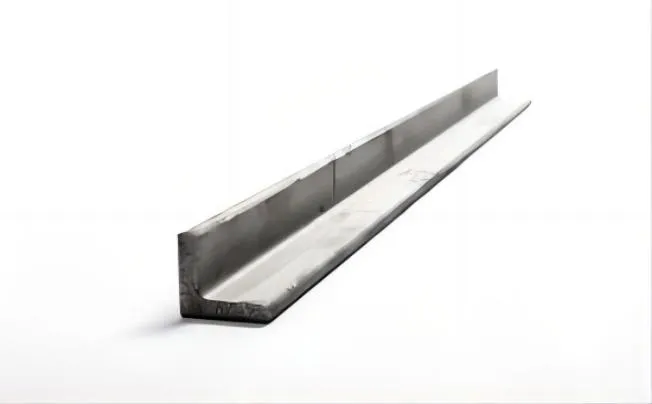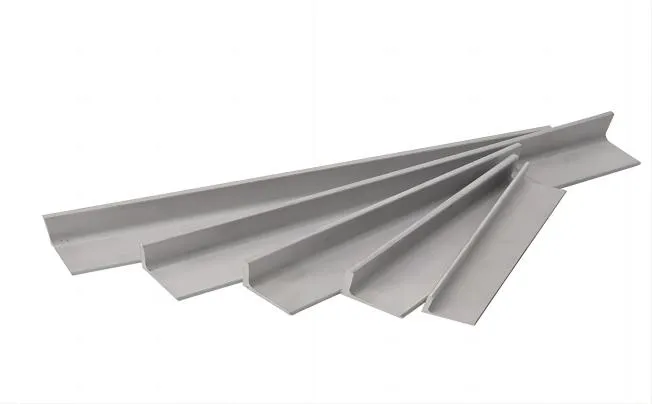What is a Stainless Steel Angle?
The L-shaped cross-section of a structural steel shape is what defines a stainless steel angle. It is composed of stainless steel, an alloy that has a significant amount of chromium together with nickel and molybdenum. Because stainless steel contains chromium, which gives it exceptional corrosion resistance, stainless steel angles can be used in a variety of settings, especially when rust and corrosion are issues.
Angles made of stainless steel can be categorized as equal or unequal. Unequal angles have one side longer than the other, whereas equal angles have both sides of the L-shaped cross-section of equal length. This enables flexibility in applications that need precise measurements of angles.
Hot rolling and laser fusion are two of the production techniques used to create stainless steel angles. They come in a variety of sizes and metals that are appropriate for various applications.
Variations in finishes and grades: Angles made of stainless steel come in a number of grades, the most popular being 304 and 316. These grades provide varying degrees of mechanical and corrosion resistance. Furthermore, based on the intended aesthetic and practical needs, stainless steel angles can have a variety of surface treatments, including polished, satin, or mill surfaces.

Common Stainless Steel Materials for Manufacturing Stainless Steel Angle
Angle steel made of stainless steel can be categorized based on its composition. Some of the commonly used types of stainless steel are austenitic, duplex, ferritic, martensitic, precipitation-hardening, and so on.
1. Austenitic stainless steel, which makes up 70.1% of all stainless steel, is produced and used in mainstream products. In stainless steel, this area is crucial. Austenitic stainless steel falls into two groups based on the alloy ratio: iron-chromium-manganese steel and chromium-nickel steel. The former is the primary component of austenitic steel and employs nickel as the austenitizing ingredient. The latter is a nickel-saving steel that uses manganese and nitrogen instead of pricey nickel, taking production costs into account. Austenitic steel is poor in strength and hardness but has strong corrosion resistance as well as good overall mechanical and process qualities.
2. Stainless steel that is ferritic Nickel is essentially absent from ferritic stainless steel, which has a chromium content of 11% to 30%. This kind of steel saves nickels. When in use, the structure is mostly ferrite. Ferritic stainless steel is characterized by its exceptional resistance to local corrosion, including pitting, crevice, and chloride stress corrosion, as well as its high strength and low cold work hardening propensity. Its low-temperature hardness and sensitivity to intergranular corrosion are its drawbacks.
3. The conventional wisdom about duplex stainless steel holds that the austenite matrix contains more than 15% ferrite. Conversely, we can refer to a material as austenite plus ferrite if there is more than 15% austenite present in the ferrite matrix. Duplex stainless steel body. The benefits of ferritic and austenitic steel are combined in duplex stainless steel.
4. Stainless steel that is malleable One type of steel whose characteristics can be changed by heat treatment is martensitic stainless steel. It is harder and more powerful. Stainless steel that has undergone precipitation hardening is strengthened by precipitating carbides within the steel by heat treatment.
The materials listed above are frequently used to create stainless steel angle steel. Furthermore, the aforementioned materials are frequently utilized to create various shapes of pipes, plates, profiles, etc.

Specifications of Common Stainless Steel Angle Steel
1. Three-dimensional illustration
The term “∠30×30×3” refers to an equilateral angle of stainless steel that has a side thickness of 3 mm and a side width of 30 mm. The side width x side width x side thickness is stated in millimetres.
2. Representation of a model
The model number, such as −3#, is the side width in centimetres. Product information for the same model with varied side thicknesses cannot be represented by the model number. In order to prevent confusion and disputes, the buyer and seller must still fully fill in the side width and side thickness measurements of the stainless steel angle steel when customizing the contract rather than relying just on the model number. Domestic stainless steel angle steel currently comes in standard specifications ranging from No. 2 to No. 20.
The number represents the side length in centimetres. The same No. angle steel comes in between two and seven various side thicknesses. The imported stainless steel angle steel displays the pertinent standards along with the true dimensions and thickness of both sides. Large stainless steel angle steel typically has a side length greater than 12.5 cm, medium stainless steel angle steel has a side length between 12.5 cm and 5 cm, and tiny stainless steel angle steel has a side length less than 5 cm.

Delivery Length of Stainless Steel Angle Steel
To satisfy the requirements of various application scenarios, items made of stainless steel angle steel must also be bought based on length during the transaction process in addition to their edge thickness.
There are two types of stainless steel angle steel delivery lengths: double length and fixed length. Based on various standards, there are four fixed-length selection ranges for domestic stainless steel angle steel: 3-9m, 4-12m, 4-19m, and 6-19m. The Japanese stainless steel angle steel has a length selection range of 6 to 15 metres. The calculation of the unequal stainless steel angle steel’s cross-sectional height is based on the measurement of its long side width.
Stainless Steel Angle Steel Appearance Quality Requirements
Generally speaking, stainless steel angle steel must not have any detrimental flaws when in use, including delamination, scars, cracking, etc. The standard contains specific requirements for surface quality and specifies the allowable range of geometric deviation for stainless steel angle steel. This range typically includes curvature, side width, side thickness, vertex angle, theoretical weight, and other factors. There can be no big twist to this.
- Construction: To build homes, structures, and frameworks, the construction industry uses stainless steel angles. Their strength and longevity allow them to support and reinforce the structure.
- Architectural and Design: Bridges, monuments, sculptures, airport roofs, and the recognizable Chrysler Building are just a few examples of the architectural applications for stainless steel angles. They give off an attractive appearance in addition to providing structural support.
- Kitchen and Culinary: Kitchen sinks, utensils, cookware, and surfaces used for food preparation are just a few examples of the culinary uses for stainless steel angles. Stainless steel is a common material in kitchens due to its easy maintenance, hygienic properties, and resistance to corrosion.
- Electrical and Electronic Enclosures: When making electrical and electronic enclosures, stainless steel angles are utilized. For delicate equipment, they offer robust and corrosion-resistant housing that shields it from the elements and mechanical stress.
- Automotive and Aerospace: Applications for stainless steel angles can be found in these fields. They are utilized in aircraft, train cars, auto bodywork, and other parts that need to be strong, durable, and resistant to corrosion.
- Industrial and Manufacturing: A variety of industrial and manufacturing contexts make use of stainless steel angles. Applications for them include reinforcements, brackets, trim, and other structural elements that need to be strong and resistant to corrosion.
- Medical and Surgical: Hemostats, surgical instruments, medical equipment, surgical implants, and temporary crowns in dentistry are all made of stainless steel angles. Stainless steel is appropriate for use in medical applications due to its biocompatibility, resistance to corrosion, and serializability.
- Different Uses: Angles made of stainless steel are employed in a variety of different fields, such as furniture production, marine applications, transportation apparatus, and agricultural gear.



